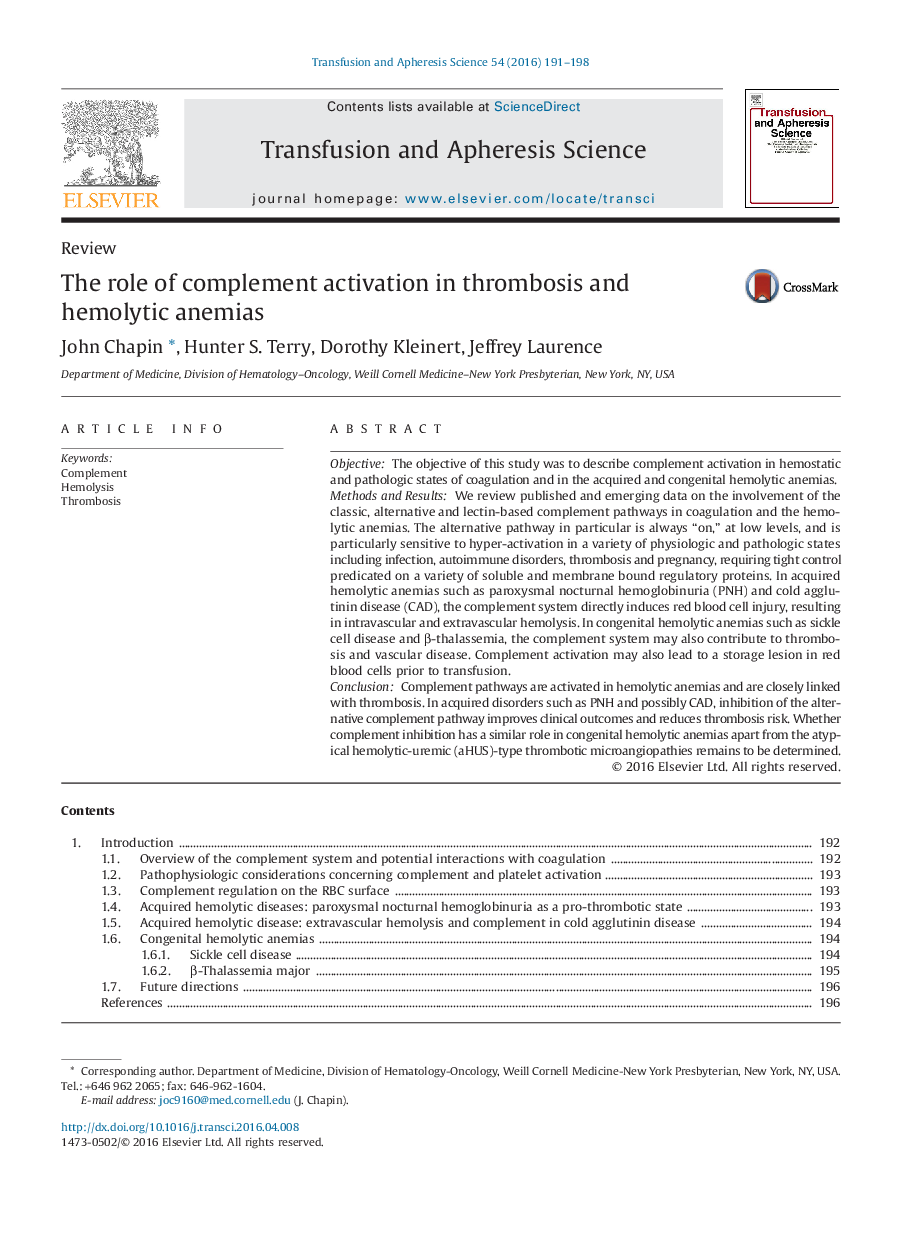| کد مقاله | کد نشریه | سال انتشار | مقاله انگلیسی | نسخه تمام متن |
|---|---|---|---|---|
| 3334860 | 1213509 | 2016 | 8 صفحه PDF | دانلود رایگان |
ObjectiveThe objective of this study was to describe complement activation in hemostatic and pathologic states of coagulation and in the acquired and congenital hemolytic anemias.Methods and ResultsWe review published and emerging data on the involvement of the classic, alternative and lectin-based complement pathways in coagulation and the hemolytic anemias. The alternative pathway in particular is always “on,” at low levels, and is particularly sensitive to hyper-activation in a variety of physiologic and pathologic states including infection, autoimmune disorders, thrombosis and pregnancy, requiring tight control predicated on a variety of soluble and membrane bound regulatory proteins. In acquired hemolytic anemias such as paroxysmal nocturnal hemoglobinuria (PNH) and cold agglutinin disease (CAD), the complement system directly induces red blood cell injury, resulting in intravascular and extravascular hemolysis. In congenital hemolytic anemias such as sickle cell disease and β-thalassemia, the complement system may also contribute to thrombosis and vascular disease. Complement activation may also lead to a storage lesion in red blood cells prior to transfusion.ConclusionComplement pathways are activated in hemolytic anemias and are closely linked with thrombosis. In acquired disorders such as PNH and possibly CAD, inhibition of the alternative complement pathway improves clinical outcomes and reduces thrombosis risk. Whether complement inhibition has a similar role in congenital hemolytic anemias apart from the atypical hemolytic-uremic (aHUS)-type thrombotic microangiopathies remains to be determined.
Journal: Transfusion and Apheresis Science - Volume 54, Issue 2, April 2016, Pages 191–198
